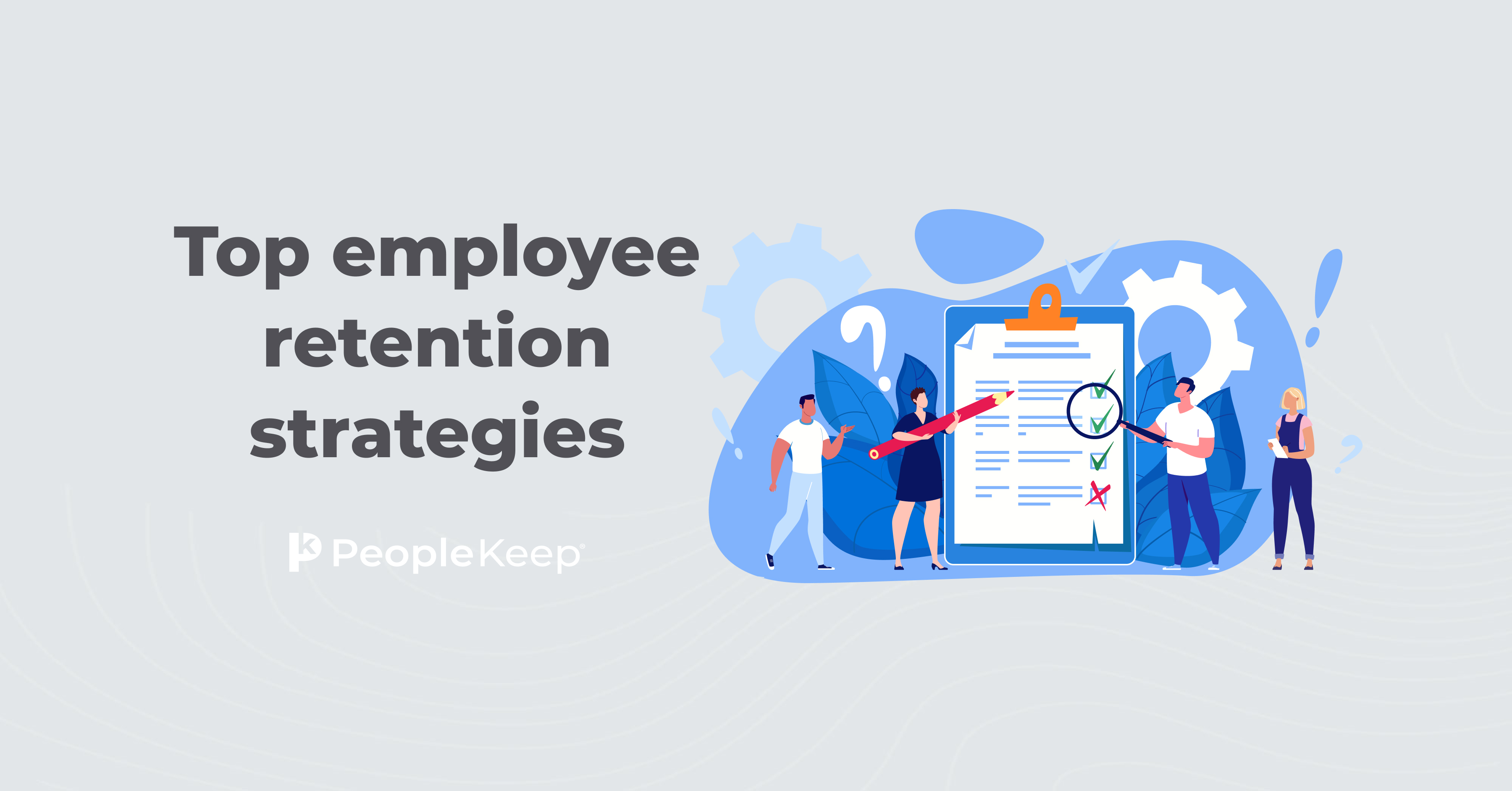Reducing Employee Turnover - 12 Tips for Small Businesses
By Christina Merhar on December 30, 2013 at 2:00 PM
Most small business owners, CEOs, and HR professionals agree that employee turnover is a growing (and expensive) issue, particularly as hiring picks up.
The cost of losing an employee is estimated to be anywhere from 16% to 213% of the employee's annual salary, depending on their role at the company.
Reducing employee turnover can be addressed during the hiring process and the new employee onboarding process. It is also an on-going effort to retain key employees.
Here are twelve (12) tips for reducing employee turnover at your small business.
Tips 1-3: Reducing Employee Turnover During the Hiring Process
These first three (3) tips for reducing employee turnover focus on finding candidates that fit the job role and the company culture.
1. Prescreen candidates for fit. Before you bring in a candidate for an in-person interview, screen the candidate for skills and fit. One trend is to use video interviews and social media interaction to evaluate the candidate for cultural fit. This can also be done during the phone interview by asking them questions to evaluate skills, as well as a cultural match.
2. Evaluate the candidate as a whole. Although this sounds simplistic, many employers focus only on their job competency and don’t look at all aspects of a candidate. Evaluate a candidate for how they’d fit in with a current team or if their values and goals align with the company’s. When you evaluate all aspects of a candidate, you’ll hire the right employees and will identify any "fit" red flags.
3. Make cultural fit a priority. Similar to number one and two, focus on acquiring candidates who are not just skilled for the position, but are also a strong cultural fit for the company. Utilize behavior-based screening and interviewing to help to make best long-term hires.
Tips 4-8: Reducing Employee Turnover During the OnBoarding Process
Nearly a quarter (22%) of employee turnover occurs in the first 45 days of employment. Which is why many small businesses have a formal (or informal) onboarding program to help reduce employee turnover. An effective employee on-boarding program ensures that new hires feel welcome and prepared in their new positions, in turn giving them the confidence and resources to make an impact within the organization. In fact, new employees who go through a structured on-boarding program are 58% more likely to be with the organization after three years.
Here are five (5) tips for reducing employee turnover during onboarding:
4. Engage new employees quickly. Engage employees right away and reduce their time to proficiency. This way, new employees will be positively effecting your organization’s bottom line faster, and also feel more engaged and motivated.
5. Have some fun. Socialization is an important part of integrating new employees, and helps new employees feel as though they are really part of the team.
6. Build a leader-employee relationship. Most employees leave managers, not companies. This means the employee to manager relationship is one of the most important relationships a new hire needs to establish.
7. Make it a game. Most small businesses do not have a budget for fancy rewards or incentives, but that doesn't mean you can't structure the on-boarding in a competitive spirit.
8. Have the employee's workstation set up. For new employees, it makes a big difference to walk into a new company and have their computer, phone, desk, and email set up and working. It immediately makes the new employee feel welcome and feel like they can jump right into work (productivity).
Tips 9-12: Reducing Employee Turnover by Retaining Current Employees
Lastly, here are five (5) tips on reducing employee turnover by retaining your current employees. These tips will help you retain current employees and become an employer of choice.
9. Invest in your staff. Investing in your staff does not just refer to compensation, although compensation is important. It means spending the time to mentor, train, and advance your staff -- to give them a career path with your business. One tip is to communicate with your staff about their goals and aspirations, and how you can help them get there. Then create an environment where new ideas are encouraged, productive work is rewarded, and people are allowed to stretch themselves to take on new roles and responsibilities.
10. Be a high-feedback company. Create a culture where employees feel comfortable providing feedback, and where you (the employer) asks employees what they think. Also, don't assume employees are happy. Ask them for feedback about what they value, and if the position is meeting their expectations. Likewise, engage in weekly feedback sessions about performance. Employees are hungry for feedback that makes them better. One tip is to set up weekly feedback meetings where you review their "keep-doing", "start-doing", and "stop-doing" activities.
11. Offer unique benefits. Offering employee benefits is important for recruiting and retention. And, there are new, more affordable options for small business health benefits (such as defined contribution health benefits). In addition to health benefits, what other benefits or perks would be valuable to your key employees? There may be low-cost perks you could offer that would set apart your company such as flexible paid time off, remote working opportunities, or a pet-friendly environment. The key is matching these benefits with what your key employees value.
12. Create meaningful employee experiences. Employees want more than a paycheck from their job. In fact, most employees are more motivated by gaining mastery of skills, a strong community, and job meaning than their compensation. This is great news for small businesses who compete with larger companies, and larger compensation packages, for top talent.
Download our employee retention eBook to learn how to keep your most valued employees without breaking your budget.
Check out more resources
See these related articles

What is employee turnover and what causes it?
Learn what employee turnover is, its types, and common causes. Discover strategies to reduce turnover and improve retention in your organization.

Employee Retention - The Top 10 Workplace Perks Employees Want
What workplace perks do employees want? Check out the list of the top 10 perks employees say they want, and other incentives to reduce employee turnover.

Top employee retention strategies
Looking for effective employee retention strategies? This guide provides you with proven tactics to reduce turnover and increase employee satisfaction.


